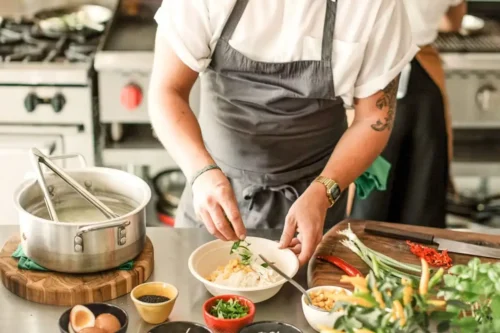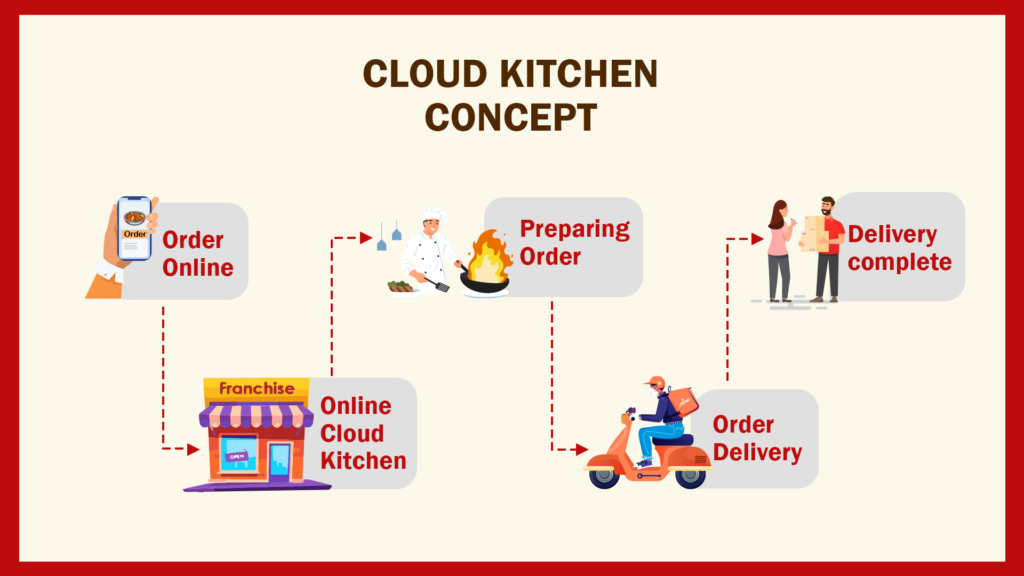
The Cloud Kitchen Business Model: A Game-Changer in the Food Industry
The food business has always fascinated me. From cozy cafés to high-end restaurants, the idea of serving delicious meals to hungry customers carries its charm. But recently, I stumbled upon a revolutionary trend that’s taking the food world by storm: the cloud kitchen business model. Also known as ghost kitchens or virtual kitchens, cloud kitchens are rewriting the rules of the traditional restaurant game, and here’s everything you need to see if you’re curious or planning to start one.

What Is a Cloud Kitchen?
Let me break it down simply. A cloud kitchen is a business model. That means no dine-in space, no fancy interiors, and no waitstaff. Instead, all the magic happens in a rented kitchen space where food is prepared and delivered straight to the customer’s doorstep via online platforms like Zomato, Swiggy, or Uber Eats.
At first, I found the concept a bit unusual. I mean, isn’t the whole point of a restaurant the ambience, the vibe?
But as I dug deeper, it made perfect sense that convenience and efficiency are now top priorities for today’s busy customers.
Why Cloud Kitchens Are Gaining Popularity
There are several compelling reasons why cloud kitchens are booming:
- Lower Overhead Costs
Without the need for prime real estate, interior décor, or dining staff, cloud kitchens significantly reduce startup and operational costs. I was surprised to learn that entrepreneurs can launch a cloud kitchen for a fraction of what it takes to start a traditional restaurant. - Faster Launch Time
Since you don’t need to build a dine-in setup, you can hit the ground running in just a few weeks. This is a major win for anyone looking to test multiple food concepts quickly. - Focus on Food and Delivery
In a cloud kitchen model, all the attention goes into perfecting the menu, optimizing delivery times, and creating a strong digital presence. As someone who appreciates good food and hates long delivery waits, I can definitely see the appeal.
How It Works
The cloud kitchen model typically functions in one of three ways:
- Single Brand, Single Kitchen
A straightforward setup where one brand operates from one kitchen location. - Multiple Brands, Shared Kitchen
This setup allows multiple virtual brands to operate from a single space—imagine one kitchen serving Chinese, pizza, and desserts all under different brand names. - Aggregator-Owned Kitchens
Platforms like Swiggy Access or Zomato Infrastructure lease out kitchen spaces to restaurant partners. It’s a win-win situation—restaurants expand without heavy investment, and platforms get more commissions.
Key Advantages for Food Entrepreneurs
I personally find the flexibility and scalability of cloud kitchens incredibly exciting. Here’s why many foodpreneurs are jumping onboard:
- Experimentation Is Easy
You can launch multiple cuisines or menus and see what works without massive investment. - Data-Driven Decisions
Since the entire operation is digital, you get real-time data on orders, customer preferences, and performance. - Low Risk, High Reward
With low capital and operating costs, the financial risk is much lower compared to brick-and-mortar restaurants.
Challenges You Should Be Aware Of
Of course, no business model is perfect. Cloud kitchens come with their own set of challenges:
- High Competition
The low barrier to entry means everyone’s trying to get in. So standing out is tough. - Dependence on Delivery Platforms
Relying on third-party apps eats into your margins and makes you vulnerable to changes in their algorithms or policies. - No Walk-In Customers
Since you exist only online, marketing becomes crucial. You’ll need to invest in SEO, food photography, social media, and maybe even influencer tie-ups to get noticed.
Final Thoughts
The cloud kitchen business model is here to stay. With the rise of food delivery apps, changing consumer habits, and the need for low-investment business opportunities, this virtual setup makes a lot of sense.
Personally, if I were to dive into the food business today, I’d seriously consider starting a cloud kitchen. It’s lean, modern, and perfectly tailored for the digital age. And who knows, your next favourite meal might come from a kitchen that doesn’t even have a doorbell.
Read More: Sam Altman Says Meta Offered $100M Bonuses to Open AI Staff – What’s Really Going On?